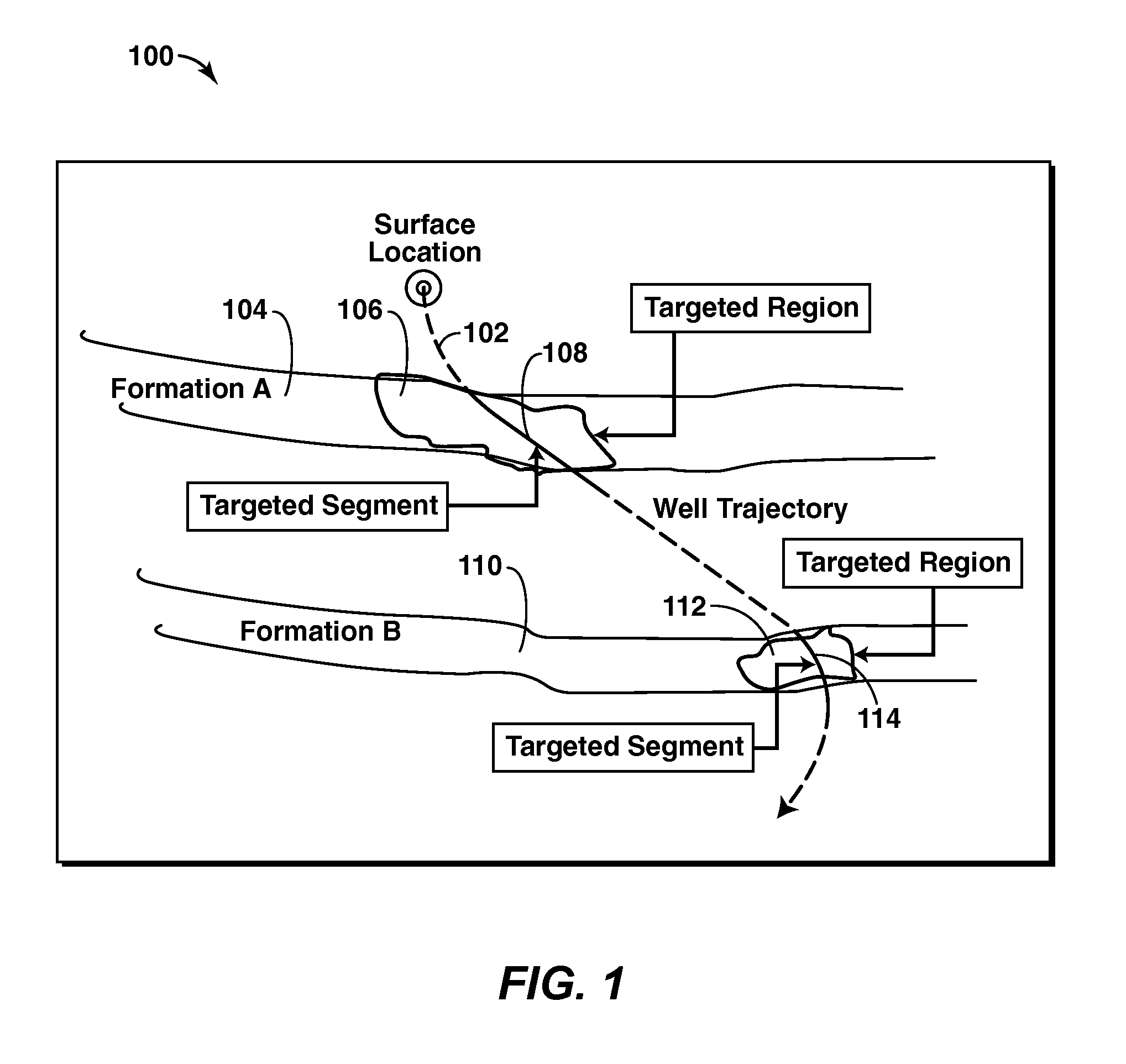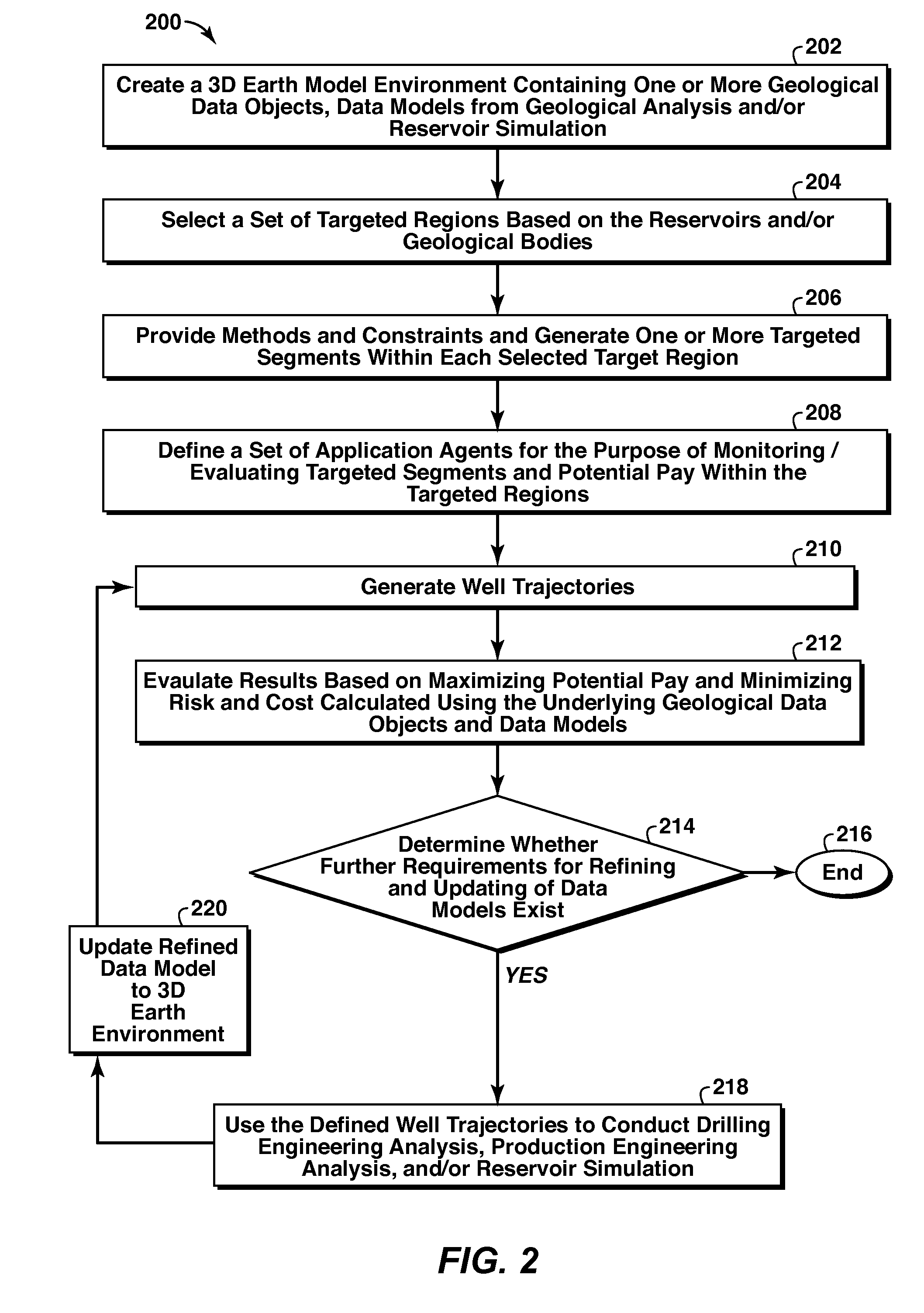System and Method For Planning A Drilling Operation
a drilling operation and planning system technology, applied in the field of system and method for planning a drilling operation, can solve the problems of inefficiency, lack of tools and interactivity, and sequential well design practices, and lack of dynamic data integration capabilities of existing work processes and software tools,
- Summary
- Abstract
- Description
- Claims
- Application Information
AI Technical Summary
Benefits of technology
Problems solved by technology
Method used
Image
Examples
Embodiment Construction
[0030]An exemplary embodiment of the present invention relates to providing tools and technologies to enable geoscience and engineering teams to more effectively utilize computing and networking technology to manage assets. These efforts include creating an interactive work environment within which multi-dimensional data can be displayed, explored, and analyzed to facilitate cross-functional decision making Applications within this environment may include: remote geo-steering of wells as they are drilled; real-time update of log and well test information for rapid update of reservoir models and development drilling plans, monitoring of pressure and flow data from instrumented wells, production and work optimization and the like.
[0031]In one exemplary embodiment of the present invention, a well planning and screening process is facilitated by creating an interactive three-dimensional environment in which the user can move beyond traditional target and path definition methods (i.e., d...
PUM
 Login to View More
Login to View More Abstract
Description
Claims
Application Information
 Login to View More
Login to View More - R&D
- Intellectual Property
- Life Sciences
- Materials
- Tech Scout
- Unparalleled Data Quality
- Higher Quality Content
- 60% Fewer Hallucinations
Browse by: Latest US Patents, China's latest patents, Technical Efficacy Thesaurus, Application Domain, Technology Topic, Popular Technical Reports.
© 2025 PatSnap. All rights reserved.Legal|Privacy policy|Modern Slavery Act Transparency Statement|Sitemap|About US| Contact US: help@patsnap.com



